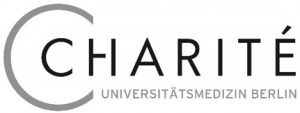

Epigenetic and transcriptional plasticity of ILC
Innate lymphoid cells (ILC) are a recently discovered group of tissue-resident lymphocytes that play important roles in immunity to infection and organ homeostasis. If inappropriately stimulated, ILC can promote autoinflammatory disorders. The transcriptional programs operative in ILC resemble the ones identified previously for T helper cell subsets. Group 3 ILC are a phenotypically complex population, but all ILC3 subsets developmentally depend on the transcription factor RORγt. ILC3 coordinate lymphoid organ development during the fetal and postnatal period and are an important source of IL-22, a cytokine required for immunity to extracellular bacterial infections, enteric virus infections and for repairing epithelial damage. Our previous work has surprisingly shown that a subset ILC3 characterized by low expression of CCR6 can co-express T-bet, the master regulator of type 1 immunity. Our fate mapping studies documented that CCR6-/low ILC3 differentiated along an increasing T-bet gradient, up-regulated NK cell receptors and other genes controlled by T-bet, and finally lost RORγt. These data challenge the concept that ILC lineage commitment is solely controlled by upregulating a fate-determining master transcription factor that represses master transcription factors of alternative cell fates. We consider that cellular differentiation is governed by epigenetic events, and in fact, progressive chromatin remodeling has been identified to be the major driver of lineage specification. In this proposal, we will test our hypothesis that such flexibility in the use of fate-determining transcription factors by ILC is mediated by epigenetic remodeling of bivalently and monovalently marked chromatin allowing for oscillations in the expression of transcription factors controling diverging cellular programs (i.e., T-bet and RORγt). Using newly developed mouse models allowing for inducible fate labelling of ILC3 subsets, we will first interrogate the ontogeny of ILC3 subsets, their potential for plasticity and identify the underlying transcriptional circuitry (Specific Aim 1). Chromatin states of ILC have not been investigated and we propose here to perform an unprecedented and genome-wide investigation of activating (H3K4me3, H3K4me1, H3K27Ac) and repressive marks (H3K27me3) at promoters and enhancers of all ILC3 subsets (Specific Aim 2). We have already obtained preliminary evidence for bivalency at the Tbx21 locus and identified a dominant role of Notch-guided H3K27me3 demethylases for the process of ILC3 plasticity. We will determine, if manipulation of ILC plasticity may allow to therapeutically dampen pathogenic ILC3 responses. It is likely that these studies will provide insights to support our model that plasticity in transcriptional and functional programs may have evolved to allow for rapid adaptation of ILC function in tissues that need to flexibly react to constantly changing environmental challenges.

Publications
Nussbaum, K., S.Burkhard, I.Ohs, F.Mair, C.S.N.Klose, S.Arnold, A.Diefenbach, S.Tugues, and B.Becher. 2017. Tissue microenvironment dictates the fate and tumor-suppressive function of type 3 ILCs. J. Exp. Med. 214:2331-2347.
Hernandez, P., T.Mahlakoiv, I.Yang, V.Schwierzeck, N.Nguyen, F.Guendel, K.Gronke, B.Ryffel, C.Hoelscher, L.Dumoutier, J.C. Renauld, S.Suerbaum, P.Staeheli, A.Diefenbach. 2015. Interferon-λ and interleukin-22 cooperate for the induction of interferon-stimulated genes and control of rotavirus infection. Nature Immunology. 16:698-707.
Bernink, J.H., L.Krabbendam, K.Germar, E.de Jong, K.Gronke, M.Kofoed-Nielsen, J.M.Munneke, M.D.Hazenberg, J.Villaudy, C.J.Buskens, W.A.Bemelman, A.Diefenbach, B.Blom, and H.Spits. 2015. Interleukin-12 and -23 Control Plasticity of CD127+ Group 1 and Group 3 Innate Lymphoid Cells in the Intestinal Lamina Propria. Immunity. 43:146-160.
Klose, C.S.N., M.Flach, L.Möhle, L.Rogell, T.Hoyler, C.Fabiunke, K.Ebert, D.Pfeifer, V.Sexl, D.Fonseca Pereira, R.G.Domingues, H.Veiga-Fernandes, S.Arnold, I.R.Dunay, Y.Tanriver, and A.Diefenbach. 2014. Differentiation of type 1 ILCs from a common progenitor to helper-like innate lymhoid cell lineages. Cell. 157:340-356.
Klose, C.S.N., E.A.Kiss, V.Schwierzeck, K.Ebert, T.Hoyler, Y.d’Hargues, N.Göppert, A.L.Croxford, A.Waisman, Y.Tanriver, and A.Diefenbach. 2013. A T-bet gradient controls the fate and function of CCR6– RORγt+ innate lymphoid cells. Nature. 494:261-265.
Kiss, E.A., C.Vonarbourg, S.Kopfmann, E.Hobeika, D.Finke, C.Esser, and A.Diefenbach. 2011. Natural aryl hydrocarbon receptor ligands control organogenesis of intestinal lymphoid follicles. Science. 334:1561-1565.
Vonarbourg, C., A.Mortha, V.L.Bui, P.Hernandez, E.A.Kiss, T.Hoyler, M.Flach, B.Bengsch, R.Thimme, C.Hölscher, M.Hönig, U.Pannicke, K.Schwarz, C.F.Ware, D.Finke, and A.Diefenbach. 2010. Regulated expression of nuclear receptor RORγt confers distinct functional fates to NK cell receptor-expressing RORγt+ innate lymphocytes. Immunity. 33:736-751.
Sanos, S.L., V.L.Bui, A.Mortha, K.Oberle, C.Heners, C.Johner, and A.Diefenbach. 2009. RORγt and commensal microflora are required for the differentiation of mucosal interleukin 22-producing NKp46+ cells. Nature Immunology. 10:83-91.